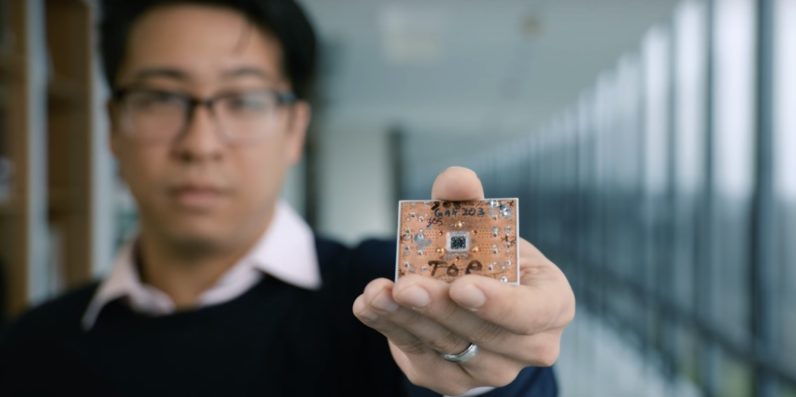
IBM yesterday announced its researchers had taken the next step toward providing a viable quantum computing solution to understanding the universe. The company’s scientists used a seven-qubit processor to conduct a successful simulation of a beryllium-hydride molecule, the largest ever performed on a quantum computer.
Quantum computing, at its most basic, takes the idea of binary computing (ones and zeros) and turns it 3D then tangles it up with itself and – through magical computational anarchy – defies physics in order to provide a more accurate representation of the natural world.
If that doesn’t make any sense, don’t worry, the boring math and science behind it isn’t much more illuminating: the regular old bit is replaced by the fancy new quantum bit, or qubit, and the processing power becomes millions of factors greater than traditional computers are.
Currently IBM is conducting the pioneering forays into quantum computing. The space isn’t empty — Google is there, and other companies are elbowing in, but IBM has a bit of a lead.
The Thomas J Watson Research Center, where the IBM Q quantum computer prototypes are located, is a ludicrously expensive laboratory full of advanced technology that your average startup can only daydream about using.
Aside from the cost to research and develop new hardware, quantum computing suffers from an extreme case of fragility. The slightest fluctuation in temperature can destroy the quantum state of the qubits and all data with it. This means that the IBM Q’s processors and other important parts are kept frozen within thousandths of a degree of absolute zero, which is no small feat.
While there are plenty of roadblocks to the full implementation of a quantum computer as the replacement for today’s supercomputers, the outlook is bright. Scientists, researchers, and tech-enthusiasts can use them now via IBM’s computing cloud to get a feel for what the future of computing is going to be like.
The ability to simulate BeH2 doesn’t represent something never-before-done; we’re able to simulate much more complex molecules with current supercomputers. It represents the next performance milestone for quantum computing hardware.
At some point IBM made a computer that could play chess. This didn’t represent something that’d never been done before either, people were already pretty good at chess.
But when Deep Blue beat Garry Kasparov it was hailed as a miraculous moment for computers.
The quantum computer is learning how to do things that regular computers can do on its way to realizing its full potential, and that’s going to take awhile. Right now it’s years away from replacing the old binary machines.
But one day — sooner than you may think — the quantum computer will relegate every other processor before it to the dustbins of technology and history, next to the laser-disc and pagers.
For more technological trending news, research and informations click on www.bondempires.blogspot.com
No comments:
Post a Comment